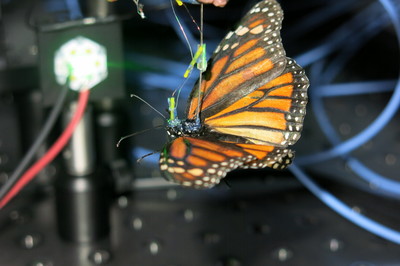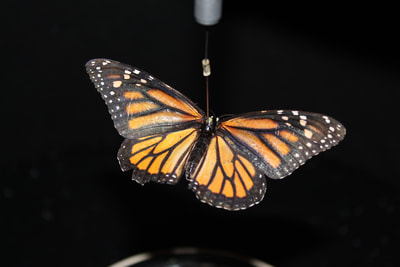SCIENTIFIC EDUCATION
APPLIED TECHNIQUES
|
Curriculum Vitae |
PUBLICATIONS
- Grob, R., Müller, V., Grübel, K., Rössler, W., Fleischmann, P.N. (2024) Importance of magnetic information for neuronal plasticity in desert ants. PNAS 121, e2320764121.
- Rössler, W., Grob, R., Fleischamnn, P. N. (2023). The role of learning-walk related multisensory experience in rewiring visual circuits in the desert ant brain. J Comp Physiol A 209, 605-623.
- Grob, R., el Jundi, B. (2023) Insect navigation: Where to face when moving through space. Curr. Biol. 33, R100–R103. [Dispatch]
- Fleischmann, P. N., Grob, R., Rössler, W. (2022). Magnetosensation during re‑learning walks in desert ants (Cataglyphis nodus). J Comp Physiol A 208, 125–133.
- Grob, R., Holland Cunz, O., Grübel, K., Pfeifer, K., Rössler, W.*, Fleischmann, P. N.* (2022). Rotation of skylight polarization during learning walks is necessary to trigger neuronal plasticity in Cataglyphis ants. Proc. Royal Soc. B. 289: 20212499.
- Grob, R., Heinig, N., Grübel, K.,.Rössler, W., Fleischmann, P. N (2021). Sex-specific and caste-specific brain adaptations related to spatial orientation in Cataglyphis ants. J. Comp. Neurol. 529:18, 3882–3892. doi: 10.1002/cne.25221.
- Grob, R., el Jundi, B., Fleischmann, P. N. (2021). Towards a common terminology for arthropod spatial orientation. Ethol. Ecol. Evol. 33:3, 338–358.
- Grob, R., Tritscher, C., Grübel, K., Stigloher, C., Groh, C., Fleischmann, P. N., Rössler, W. (2021). Johnston’s organ and its central projections in Cataglyphis desert ants. J. Comp. Neurol. 529, 2138–2155.
- Fleischmann, P. N., Grob, R., and Rössler, W. (2020). Kompass im Kopf - Wie Wüstenameisen lernen heimzukehren (Ant compass – how desert ants learn to navigate). Biol. Unsere Zeit 2/2020:50, 100–109. [popular scientific article].
- Fleischmann, P. N., Grob, R., and Rössler, W. (2020). Magnetoreception in Hymenoptera: importance for navigation. Animal Cognition. 23:6, 1051-1061. .
- Grob, R., Fleischmann, P. N., and Rössler, W. (2019). Learning to navigate – how desert ants calibrate their compass systems. Neuroforum. doi: 10.1515/nf-2018-0011.
- Fleischmann, P.N.*, Grob, R.*, Müller, V. L., Wehner, R., and Rössler, W. (2018). The Geomagnetic Field Is a Compass Cue in Cataglyphis Ant Navigation. Curr. Biol. 28 :9, 1440–1444.
- Grob, R.*, Fleischmann, P. N.*, Grübel, K., Wehner, R., and Rössler, W. (2017). The Role of celestial compass information in Cataglyphis ants during learning walks and for neuroplasticity in the central complex and mushroom bodies. Front. Behav. Neurosci. 11:226.
- Fleischmann, P. N., Grob, R., Wehner, R., and Rössler, W. (2017). Species-specific differences in the fine structure of learning walk elements in Cataglyphis ants. J. Exp. Biol. 220, 2426–2435.


